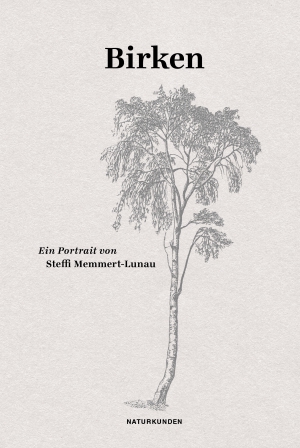Radiant, fertile, youthful: the pioneer plant with the delicate, sticky leaves provides people with shimmering shade and a series of festive rites surrounding its flourishing, not only at Pentecost, when young May trees are carried into villages. With tirelessly resourceful reproductive power, the birch grows in the most unlikely places, on the slopes of Mount Etna as well as in peat bogs, and prepares the breeding ground for other tree species and a multitude of fantasies that have shaped poems, rhymes and children's songs, especially in Slavic and Scandinavian culture, but also the Worpswede artists' colony. While the forestry industry held the tree in low esteem and regarded it as disruptive and worthless, today the birch is seen as the savior of the forest, not only warding off fires but also bringing back biodiversity and counteracting the losses caused by climate change.
Non-fiction
Steffi Memmert-Lunau, born in 1962 and raised in Halle/Saale, studied Slavic studies and literary history in the Soviet Union during perestroika. After completing her doctorate, she taught at the Institute for Slavic Studies in Greifswald and then worked in Switzerland. She translates books from Russian and publishes essays and travel books. She has been living in Berlin since 2017.







